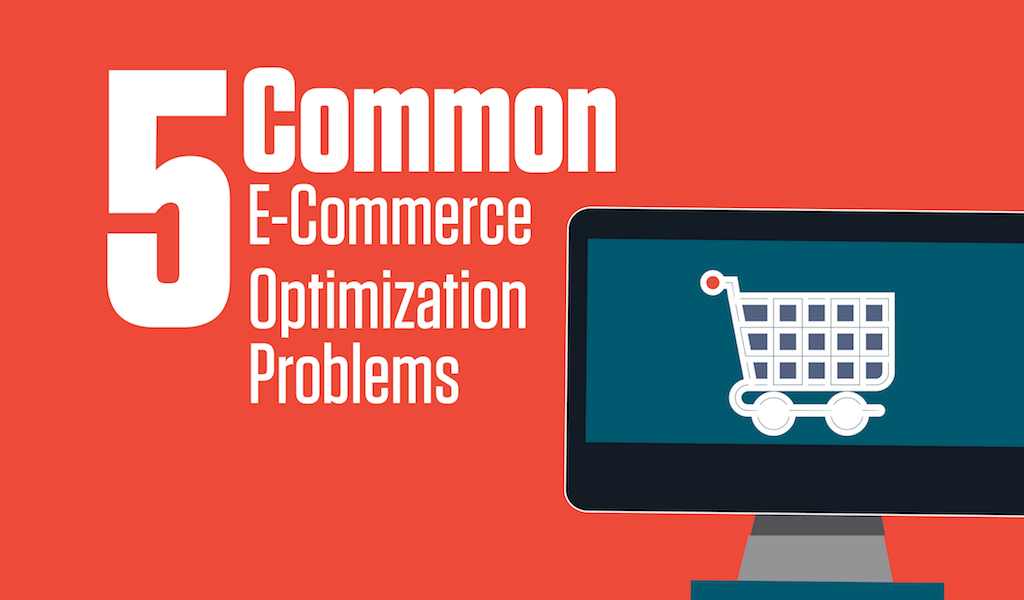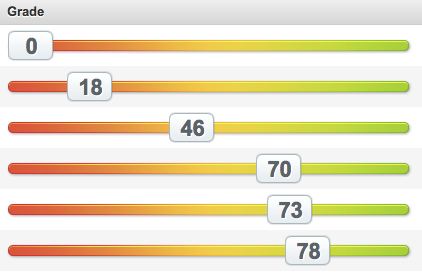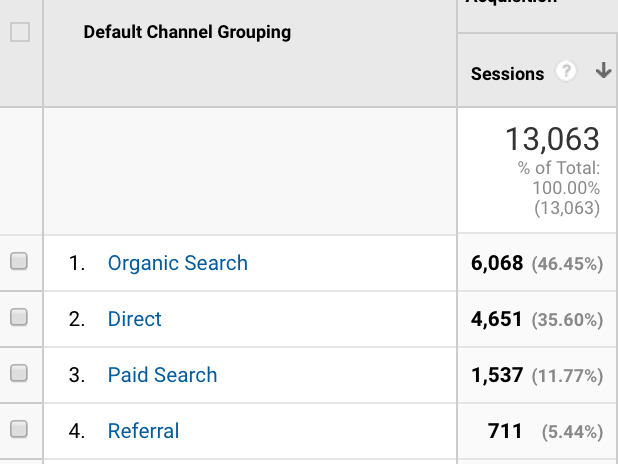
Updated: April 2023
Optimizing an e-commerce website can be challenging. As a business owner or designer it’s hard to know what to do next that will have the greatest impact. Should I test a new landing page? Should I add more product description? Should I add more blog posts or redesign the home page? All of these are potential solutions but are you addressing the foundation of what makes a good e-commerce website?
Here are just a few problems you might encounter:
- Low Conversion Rates
- Slow Page Load Time
- No Visitor Source Diversity
- Low Social Media Activity
- No Goals / Missing Conversion Tracking
Common Issues
To help your team identify common ecommerce problems that need the most attention, here are five red flags that should be a cause of concern for any website. If you notice any of these red flags, get a deeper analysis or SEO audit. A full audit will uncover opportunities that can make a big difference in your e-commerce ROI, or at the very least help point you in the right direction.
1. Low Conversion Rates
You’ve noticed while digging into your web analytics that your e-commerce conversion rates seem very low. What is a low conversion rate? It depends on your industry but for most B2C retail e-commerce websites it’s in the 2-5% range. B2B websites should generally have a slightly higher conversion rate but that may include wholesale customers so it’s always a good idea to have solid analytics. Lower than 1% and you definitely have some issues to address. You now know there is a problem, but what’s the solution?
“Let’s redesign the website!”
Redesigning your website just because you have low conversion rates may not be the right solution. Redesigns can be costly and will often be a web design firms’ first reaction since they may not really understand the problem. Make sure you consult one or two experienced digital marketing professionals before giving the go ahead on a redesign. It could save you time and money spent fixing what isn’t broken.
“Let’s lower prices!”
There are times when pricing something at $99 from $115 makes sense to increase orders. The average order value is in the range of $100-155 for US consumers online. Good information to know when pricing your products. If you’re selling products online at $1749 each, there’s a good chance you’ll fall short of common retail performance KPIs when compared to products selling at $49 each. Is your pricing structure preventing you from converting visitors?
Customers make a purchase decision on more than just price. Simply lowering prices may have a short term gain but consider the long term impact of conditioning your customers into seeing less value in your brand than they did before. Don’t get in the trap of lowering your prices to be the lowest. It’s a slippery slope.
“Let’s run a giveaway!”
Make sure you are delivering value in other ways than just price, freebies or deep discounts. You may be less expensive than one of your competitors but is that competing website easier to use? If the answer is yes, lowering your price will not solve the problem. Help your customers solve problems through engaging content. Great content is another way to provide value and help justify a higher price.
It’s hard to say what may be causing low conversion rates but there may be a few metrics to consider. Make sure to review your search engine visitors. Do your search visits have a high bounce rate? Are you driving low quality visitors to your site? Are you running any new display ad or email campaigns? The website may not be your problem if the quality of your visitors is low. Low quality visitors typically leave your website quickly and rarely make a purchase. Look at each channel to make sure you’re getting the most bang for your buck.
2. Slow Page Load Time
Most ecommerce website owners and web design firms have high speed internet connections and forget not everyone can access their website in the same way. Many mobile devices and tablets run on 3G networks that are often slower than broadband connections. A website that takes 2 seconds to load on a desktop PC with broadband could take 4-6 seconds to load on a slower connection. Search engines also like to see websites that load quickly and provide a positive browsing experience.

Check out Pingdom’s page speed tool or Google’s own tool to see how fast you website loads, you may be surprised how slow some of your web pages load. Slow page load time can really hurt conversion rates. No one wants to wait more than 2-3 seconds for a page to load. Have your SEO consultant run a few page speed reports to see where you stand.
3. Visitor Source Diversity
Take a peek at your web analytics reports again and goto the All Traffic > Channel report. Do you see a majority of your visitors coming from one source? Having most of your visitors coming from one source is a major red flag. If your website relies heavily on Google organic search for example, it may be time to explore other digital marketing channels.

A major downside of having more than 90% of your visitors coming from one source is when that source makes changes, and Google does this frequently, you feel the positive or negative impact of those changes more than you should. Get in touch with a digital marketing company to help you evaluate other advertising channels and diversify your visitor mix.
4. Low Social Media Activity
Social media may be relatively new compared to other marketing channels like email, search engines and online advertising but that doesn’t mean it should be ignored. Social media activity is growing at an exponential rate. Facebook now has over 2 billion monthly active users in 2017 (Source: Techcrunch).
It’s clear social media is becoming a more prominent digital marketing channel. The strategy of passive social media activity misses out on potential gains in followers and influence. Customers only have enough time to follow so many brands or people. If you’re not part of their circle now or in the near future, it will become more difficult over time.
With each passing week, there is more and more noise in social media which makes it harder to get followed. Take action today to make sure you don’t miss a wave of new customers. Don’t get obsessed with e-commerce ROI when it comes to social. Social is an early stage introducer in the buying cycle and unless you are frequently running discounts or tweeting coupon codes, social will not have a lot of direct orders.
5. No Goals / Missing Conversion Tracking
By default, most analytics packages will show you visitors, search engine activity and more. With a little configuration you can see online orders, landing page goal conversions and more. Make sure you are tracking all the potential conversion points. Start tracking PDF downloads, email clicks, video views and more. These are important engagement metrics that a package like Google Analytics can help you track. You don’t need expensive analytics or automation software if you have the right tracking in place.
If you have some or all of these issues it’s worth talking to a digital marketing consultant who can conduct a full analytics audit. A consultant will review your Google Analytics (GA4) reports to see what’s missing and what needs added. They can help you create a budget for each marketing channel, plan and test. If you’re interested in learning more about e-commerce optimization, please contact us today for a free consultation.
Please Share
We hope you have enjoyed this post on e-commerce optimization. Please share on Facebook, Twitter, Linkedin, or Google+. Thanks again and good luck!
